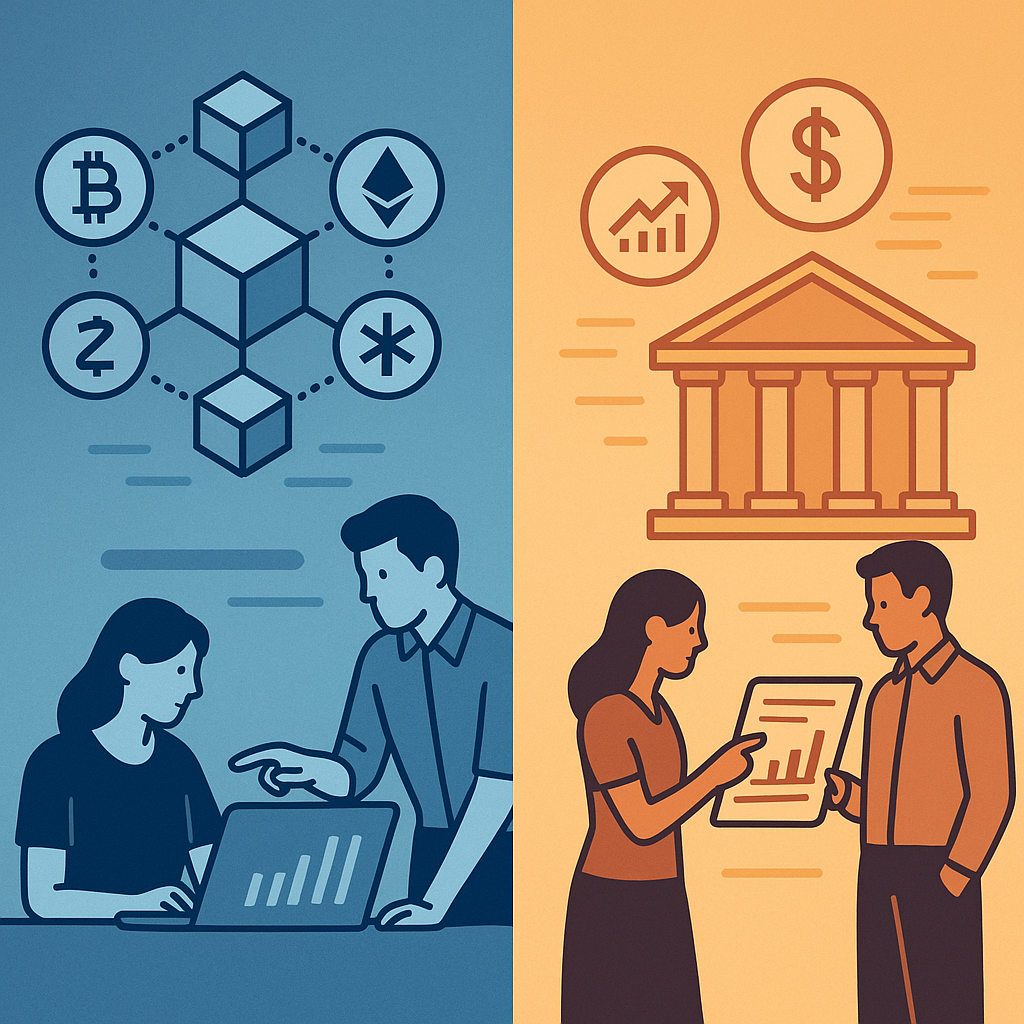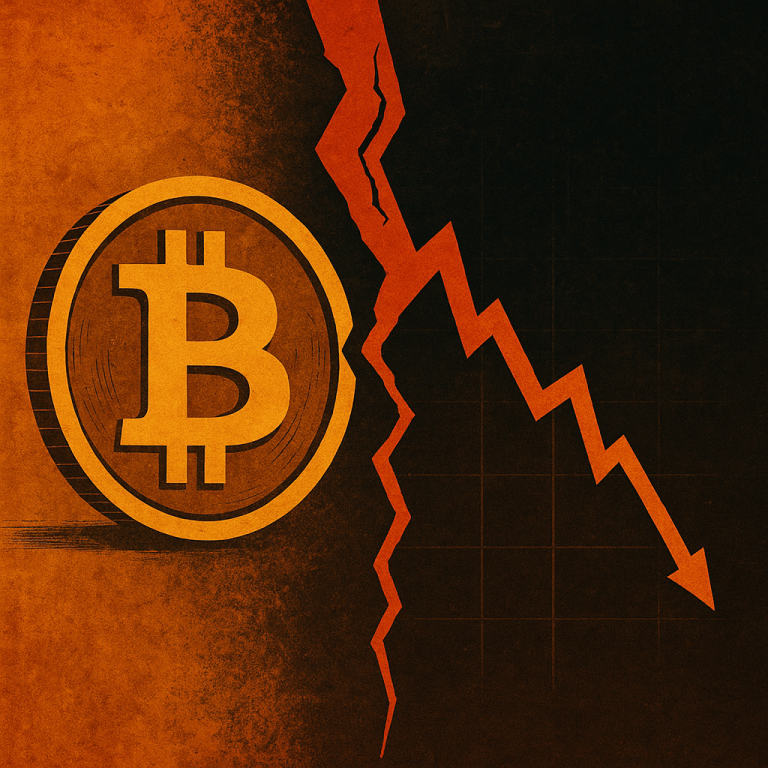The question of whether Decentralized Finance (DeFi) will replace Traditional Finance (TradFi) is becoming increasingly relevant. With over $60 billion locked in DeFi protocols (TVL, 2025 data) and central banks actively testing CBDCs, the debate is no longer if change will happen, but how it will unfold.
The Appeal of DeFi
DeFi has revolutionized the way we think about finance:
- Universal access: Nearly 1.4 billion people remain unbanked worldwide (World Bank, 2023). DeFi lets anyone with internet access participate without approval from banks.
- Full transparency: Transactions on Ethereum or Solana are publicly verifiable, unlike opaque balance sheets in TradFi.
- Constant innovation: Protocols like Aave (lending), Uniswap (DEXs), or flash loans offer services impossible to replicate in traditional banking.
DeFi represents financial freedom in its purest form, removing historical barriers and empowering individuals globally.
The Challenges of DeFi
Still, DeFi is far from perfect:
- Security risks: In 2022 alone, hackers stole over $3.8 billion from DeFi protocols (Chainalysis). Smart contract bugs remain a major threat.
- Volatility: Assets like Bitcoin and Ethereum can drop double digits in days, making them impractical for everyday transactions.
- Regulatory uncertainty: The U.S. SEC vs. crypto exchanges shows how fragmented regulations create uncertainty for builders and users.
- Scalability issues: Networks like Ethereum often face high fees, gas costs can spike above $50 during congestion, limiting usability.
The Strengths of TradFi
Despite its flaws, TradFi remains a solid system for several reasons:
- Institutional trust: Banks are backed by deposit insurance (e.g., FDIC up to $250,000 in the U.S.), offering consumer protection DeFi lacks.
- Global credit access: Mortgages, business loans, and insurance are deployed at scale, services DeFi is only starting to explore with real-world asset tokenization.
- Proven infrastructure: Payment systems like Visa process over 65,000 transactions per second, far beyond current blockchain capacity.
The Challenges of TradFi
TradFi faces equally serious issues:
- Financial exclusion: Millions remain unbanked, particularly in Africa and Asia.
- High costs & intermediaries: Sending money internationally via banks can cost up to 7% in fees (World Bank, 2022).
- Lack of transparency: The 2008 financial crisis revealed hidden risks in mortgage-backed securities, unseen by the average consumer.
- Slow innovation: Fintechs move faster, but banks remain bound by legacy systems and bureaucracy.
- Systemic risks: The collapse of Lehman Brothers in 2008 and regional banks in 2023 show how fragile the system can be.
- Eroding trust: Gallup polls show public trust in banks has fallen from 60% in 1979 to under 30% today in the U.S.
The Future: DeFi or TradFi?
The most likely outcome isn’t “one or the other,” but a blend of both worlds:
- Banks adopting blockchain: JPMorgan’s Onyx blockchain already processes billions in tokenized assets.
- Regulated DeFi protocols: Platforms are moving to integrate real-world assets, such as tokenized U.S. Treasuries.
- CeDeFi & CBDCs: Binance pioneered CeDeFi (Centralized DeFi), while countries like China are rolling out the digital yuan.
The hybrid model balances decentralization’s innovation with regulation’s stability. But tensions remain: regulators may try to control DeFi, while banks could absorb innovation rather than coexist with it.

Conclusion
DeFi will not completely eliminate TradFi, but it is forcing it to evolve rapidly. The most realistic outcome is a hybrid financial system, where decentralization and transparency coexist with stability and consumer protection.
The challenge ahead is finding the balance between freedom, security, and efficiency, and deciding who will set the rules of the new financial era: code or institutions.
News Highlights
- Figure IPO Success
Blockchain lender Figure went public on Nasdaq, reaching a valuation of around $7.6 billion. Its stock jumped over 40% on debut, fueled by strong demand and its focus on blockchain-based home equity loans. - US Democrats Push Crypto Regulation
A group of Democratic senators unveiled a regulatory framework for crypto assets, seeking clarity on whether tokens should be treated as securities or commodities. This reflects growing political interest in shaping the industry. - Avalanche Plans $1 Billion Fundraising
The Avalanche Foundation aims to raise $1 billion for entities designed to accumulate crypto and expand adoption. The initiative involves private investors and a SPAC partnership with Dragonfly Capital. - Crypto Market Moves
Bitcoin, Ethereum, and XRP posted modest gains, partly supported by IPO optimism and steady US economic data. However, some caution remains due to inflation concerns and Federal Reserve policy. - Altcoins in Focus
Market commentary highlighted XRP and Cardano as major players this month, while emerging tokens like Remittix gained attention for their real-world payment utility and cross-border transfer use cases. - Bitcoin Exchange Reserves Fall
On-chain data shows Bitcoin reserves on centralized exchanges at multi-year lows, suggesting strong accumulation by large holders (“whales”) and reduced selling pressure. - Federal Reserve Expectations
Crypto markets are closely tracking US monetary policy, with rising bets on an upcoming 0.25% rate cut by the Federal Reserve. This has influenced short-term sentiment across digital assets. - Nasdaq Eyes Tokenized Securities
Nasdaq has filed to operate trading of tokenized securities, aiming to bridge traditional finance with blockchain innovation. If approved, this could mark a major step toward mainstream institutional adoption.







